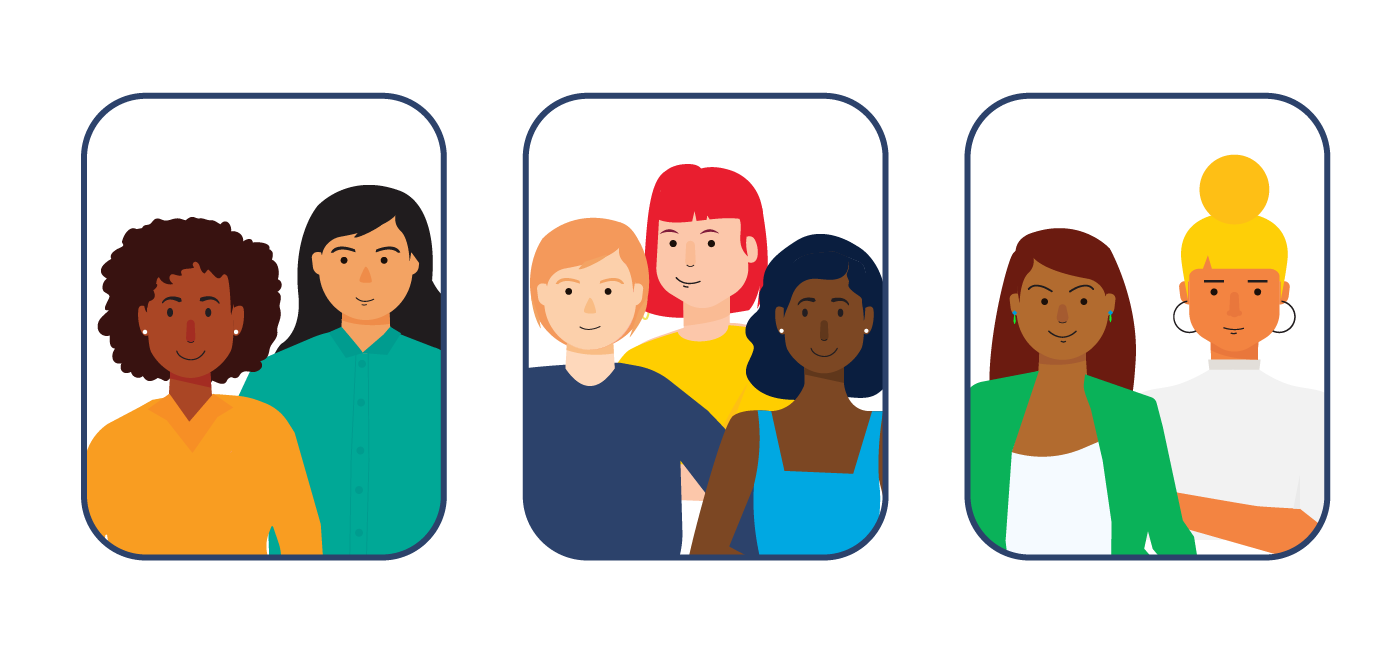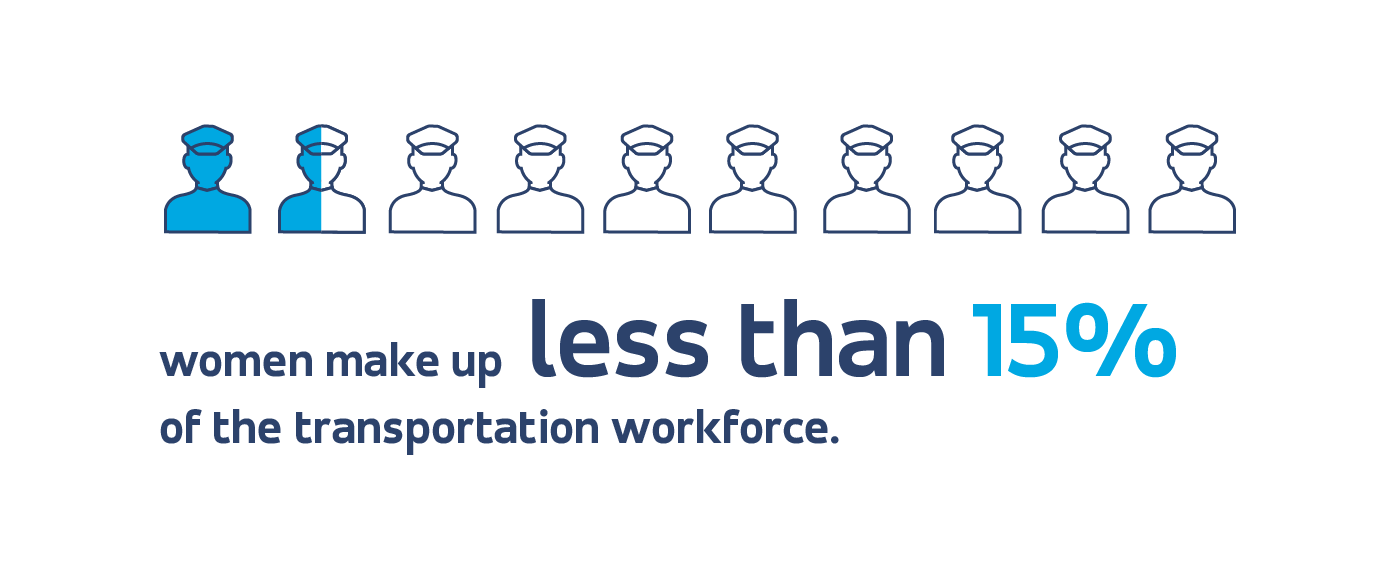As part of our Women in TransitTech series, we’re profiling women driving transportation innovation in their communities. Dive into their stories here.
A trip on any public transit system in the world would reveal a common sight: A caregiver struggling to lug a stroller, a child, and bags from errands up or down several flights of stairs, into a subway car, or onto the bus. In honor of Women’s History Month, we’re taking a look at how transportation gender bias impacts women, and celebrating the growing ranks of women within the industry working to improve transportation for all. Women around the world bear the majority of care and domestic work and — because most transportation systems have not been designed with caregivers’ needs in mind — this work translates to more trips, more fares, and more hassle. Meanwhile, other female-identifying transit riders who may not work in the caregiving field must still grapple with the threat of harassment and assault on public transportation.
Fortunately, things are starting to change as governments and transit agencies recognize the need for greater equity and inclusion. In honor of Women’s History Month, we’re taking a look at how transportation gender bias impacts women, and celebrating the growing ranks of women within the industry working to improve transportation for all.
The Pink Tax on Transportation: Time and money.
Studies show that the discrepancy between how women and men travel on public transit can be attributed to the amount of time women spend “trip chaining,” or making multiple-stop, household errand-related trips, like grocery shopping and caregiving. And, as we hinted above, key to understanding the problem of caregiver accessibility on public transit (or lack thereof) is understanding the gender dynamics within the caregiving field. Sarah Kaufman, Associate Director of the NYU Rudin Center for Transportation, noted at ITS America’s MobilityXX webinar last month that the National Alliance for Caregiving reports no less than 61% of US household caregivers are women.
In an effort to delve deeper into the inequities faced by female-identifying transit riders in New York City, Kaufman, along with colleagues Christopher F. Polack and Gloria A. Campbell, published The Pink Tax on Transportation: Women’s Challenges in Mobility. The study concluded that, in addition to the extra time invested in travel, caregivers spend an additional $26-$50 per month to do things like take children to school, run household errands, and transport elderly relatives to medical appointments. WIRED notes that these caregiving tasks also often “mean repeatedly getting on and off the bus, meaning paying more fares,” especially in places where a lack of an integrated transit network makes each transfer a new expense.

Personal safety.
Another way in which transit puts female-identifying individuals at a disadvantage? Safety. Perceived and actual safety play a disproportionate role in the decisions women make around their travel. As reported by Streetsblog USA, a recent study in Los Angeles found a significant gender gap in locals’ willingness to try out a new rail line closer to home. Overall, households within a half mile of a new station increased their weekly transit trips by 4.3% but, for women respondents, that number drops to 2.7%. 20% of women who did not use the new service said their decision was due to safety concerns.
The findings led lead author Hsin-Ping Hsu to conclude, “Fear of crime is a crucial restrictor on women’s use of transit.” Additionally, women with less economic privilege tend to not have the option of resorting to private rideshare companies or taking a personal vehicle when transit fails them. And research shows that women of color experience even more instances of harassment and theft while utilizing public transportation.

Of course, these problems are not limited to the United States. The harassment women risk simply by existing in public even spurred a United Nations-backed campaign: Safe Cities and Safe Public Spaces, which launched in 2010 and saw participating cities Ho Chi Minh, Mexico City, Quito, Cairo, Kigali, and Marrakech focusing their efforts on public transportation.
Equitable transit starts with equitable data collection.
In the US, women account for more than half of all transit ridership , yet their travel patterns and preferences have rarely been accounted for in planning efforts, or even measured. In order to fashion actionable solutions, we need accurate, comprehensive data. Unfortunately, the historical biases that have caused these gendered discrepancies in the first place also inform the data that has been collected — or not collected — around the experiences of women riding transit.
As Ania McDonnell notes in the Gender Policy Report: “Many local transportation agencies do not collect adequate data on safety complaints from women using public transportation, the gendered gaps in transportation use, the reasons for transportation disparities, and other barriers to transportation access by gender and race.”

The good news is transportation agencies are starting to re-examine their assumptions when setting policies or designing new services. Most notable is LA Metro’s groundbreaking 2019 study, “Understanding How Women Travel,” which digs into the transit behavior and needs of women while highlighting the obstacles they face while using it. Some of the key findings include:
- Adjustments to services, vehicle design, and policy would help minimize the time, cost, safety, and physical burdens of riding transit for women.
- Safety concerns underscore the burden and stressors experienced by women using the transit system. Reliability issues exacerbate women’s safety concerns and financial burdens.
- For women who rely on transit, an unreliable system has real consequences. A late train can mean daycare fines, a skipped stop can mean a missed medical appointment, and infrequent early morning or late night service can limit employment opportunities.
- For women on transit, issues of convenience and comfort are inextricably linked to issues of access, safety, and reliability.
Transport for London regularly releases reports on its underrepresented riders and the diversity of its workforce. The City of Vienna, Austria, now centers gendered issues in its planning. According to Mayor Michael Ludwig, “the aim [has been] to incorporate gender aspects into the mainstream and not just compile studies and implement pilot projects.” Both governments and agencies worldwide are taking steps to name and address inequities and make transit work better for everyone.

At its core, mobility is more than just movement: Transportation enables economic growth, opportunity, and personal freedom — fundamental rights all people deserve to exercise. That’s why, throughout Women’s History Month, we’re proud to highlight a group of women making an outsized impact on the field by increasing transit access, sustainability, and service for their communities.
Read their stories and see why the transportation industry shouldn’t just want more women in leadership positions — it needs them.





